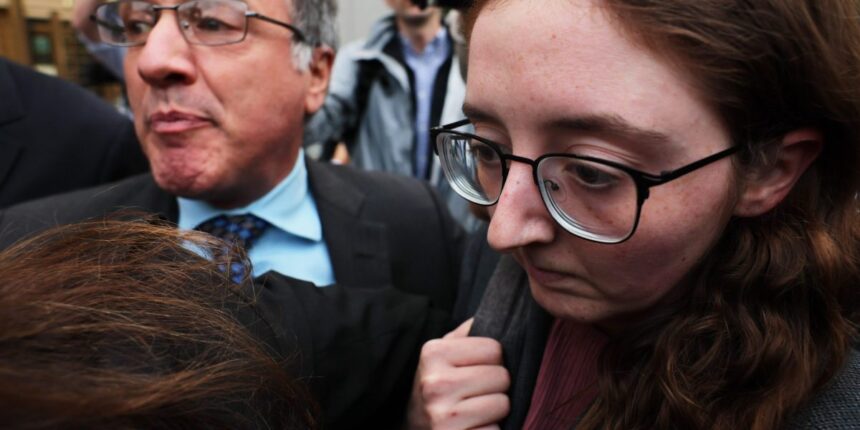
Caroline Ellison is arguably the star witness in the government’s case against Sam Bankman-Fried, the former CEO of the bankrupt crypto exchange FTX who’s on trial for fraud. And what became apparent during her testimony on Tuesday is that, compared with three other key lieutenants who’ve all turned on their former boss, she took similar risks for far smaller rewards.
Ellison, who testified that she conspired with Bankman-Fried “to commit these crimes,” is the former CEO of Alameda Research, a crypto hedge fund Bankman-Fried also owned. She was given no equity in Alameda and only a half-a-percentage-point stake in FTX. When she broached a conversation with him over receiving equity in the hedge fund, he was “initially receptive” but later told her “it was too complicated.”
Gary Wang, cofounder and the former CTO of FTX, had a 16% stake in FTX and a 10% stake in Alameda. Nishad Singh, former director of engineering at FTX, owned 5% of the company, according to Michael Lewis’s recent SBF tell-all. And Bankman-Fried owned the lion’s share—90% of Alameda and more than half of FTX, per Lewis.
Moreover, while the three siphoned billions of dollars in personal loans out of Alameda—what prosecutor Danielle Sasson called “loans to insiders”—Ellison took out a comparatively minuscule $1.3 million to invest in a startup, she said on Tuesday. Even Ryan Salame, co-chief of FTX’s Bahamas subsidiary whom past witnesses don’t usually cite as part of the FTX inner circle, took out $35 million to donate to Republican political campaigns.
Ellison was, by most measures, handsomely compensated during her time working for Bankman-Fried, whom she also dated on and off. She had a base salary of $200,000 in addition to large bonuses, including a $20 million haul in 2021, half of which she said she invested in a startup. (Prosecutors later told the judge that she personally invested in AI darling Anthropic, but it was unclear whether that was in reference to the $10 million she mentioned as part of her prior testimony.)
However, her comparative lack of compensation with those in the boys’ club of Bankman-Fried, Singh, and Wang highlights a continuing theme throughout her testimony: how she, the only woman in Bankman-Fried’s inner circle, answered to him and his lieutenants, not the other way around.
Bankman-Fried has previously laid the blame for the collapse of FTX at Ellison’s feet, saying in writings published by the New York Times that she didn’t appropriately hedge against risk. “She continually avoided talking about risk management—dodging my suggestions—until it was too late,” he wrote. And Mark Cohen, one of his lawyers, hit again and again on this theme in his opening statement, repeatedly mentioning Ellison by name. “As the majority owner of Alameda, he spoke to Ms. Ellison, the CEO, and he urged her to put on a hedge, something that would protect against such a downturn,” Cohen said of his client.
Ellison, though, repeatedly emphasized in her testimony that it was Bankman-Fried who told her to ignore the considerable risks Alameda was running. In late 2021, for example, she told Bankman-Fried why it would be incredibly risky for Alameda to take out $3 billion in loans to invest in startups—it would further imbalance the hedge fund’s balance sheet. Even after she raised her concerns, Bankman-Fried said that he planned to go ahead and take out billions of dollars in loans, unveiling FTX Ventures in January 2022.
At one point, prosecutors asked Ellison about her ex’s appetite for risk. If there were a 50% chance that a coin flip would lead to the world being “twice as good,” she said, “he’d be happy to flip a coin if it turned up tails and the world was destroyed.”








